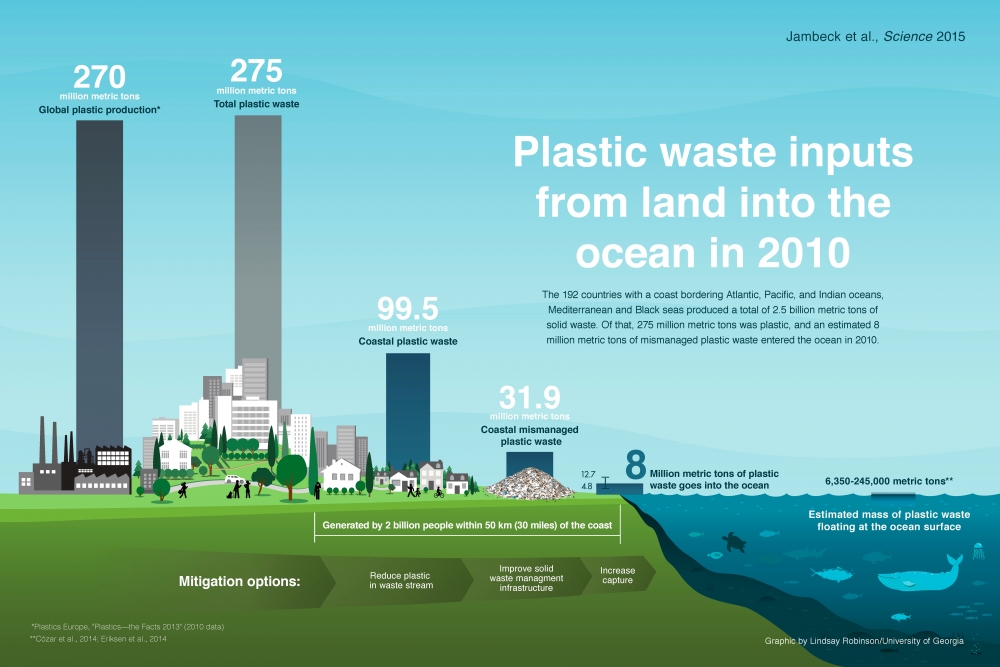There's How Much Plastic In The Ocean? [INFOGRAPHIC]
We've taken a look at a number of ventures aimed at making use of plastic in the ocean, and we'd love to believe they could make a sizable dent in this pollution source. But, of course, to determine that, we've got to know how much plastic waste we're putting into these ecosystems. A new study from a working group at UC Santa Barbara's National Center for Ecological Analysis and Synthesis (NCEAS), along with the Ocean Conservancy, took a stab at quantifying how much plastic waste we're sending into the world's oceans, and the findings are pretty grim:
The study found that more than 4.8 million metric tons of plastic waste enter the oceans from land each year, and that figure may be as high as 12.7 million metric tons. That's one to three orders of magnitude greater than the reported mass of plastic floating in the oceans. A metric ton is equivalent to 1,000 kilograms or 2,205 pounds.
That's over 10 billion pounds… on the low end. And, again, that's annually. Probably not something were going to counter by making 3D printing filament. In fact, the number is so staggeringly large that scaling up to harvest the plastic already there really isn't viable economically – at this point, we have to lower the amount of ocean plastic being created to make a dent. That certainly means we've got to increase our plastic recycling rates dramatically, but it probably also means we need to reconsider our use of this material at some level… the oceans are literally choking on it.
If you haven't looked at Chris Jordan's Midway photographs, do so to get a picture of what this kind of pollution looks like. Once you've got those images in your head, and digested some of the facts from the infographic above, share your thoughts on how we might begin to address this massive stream of waste.
Infographic credit: UC Santa Barbara Current

